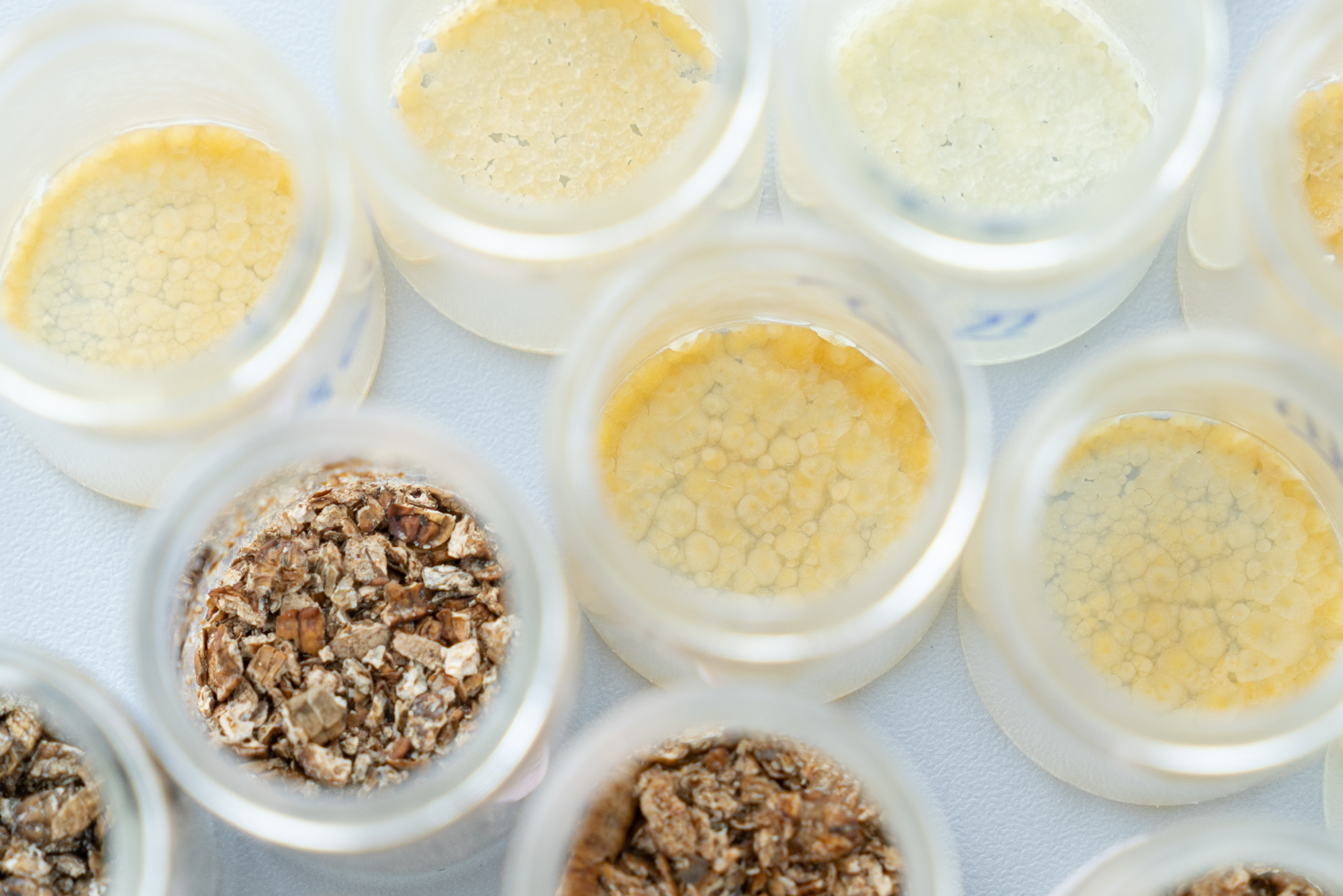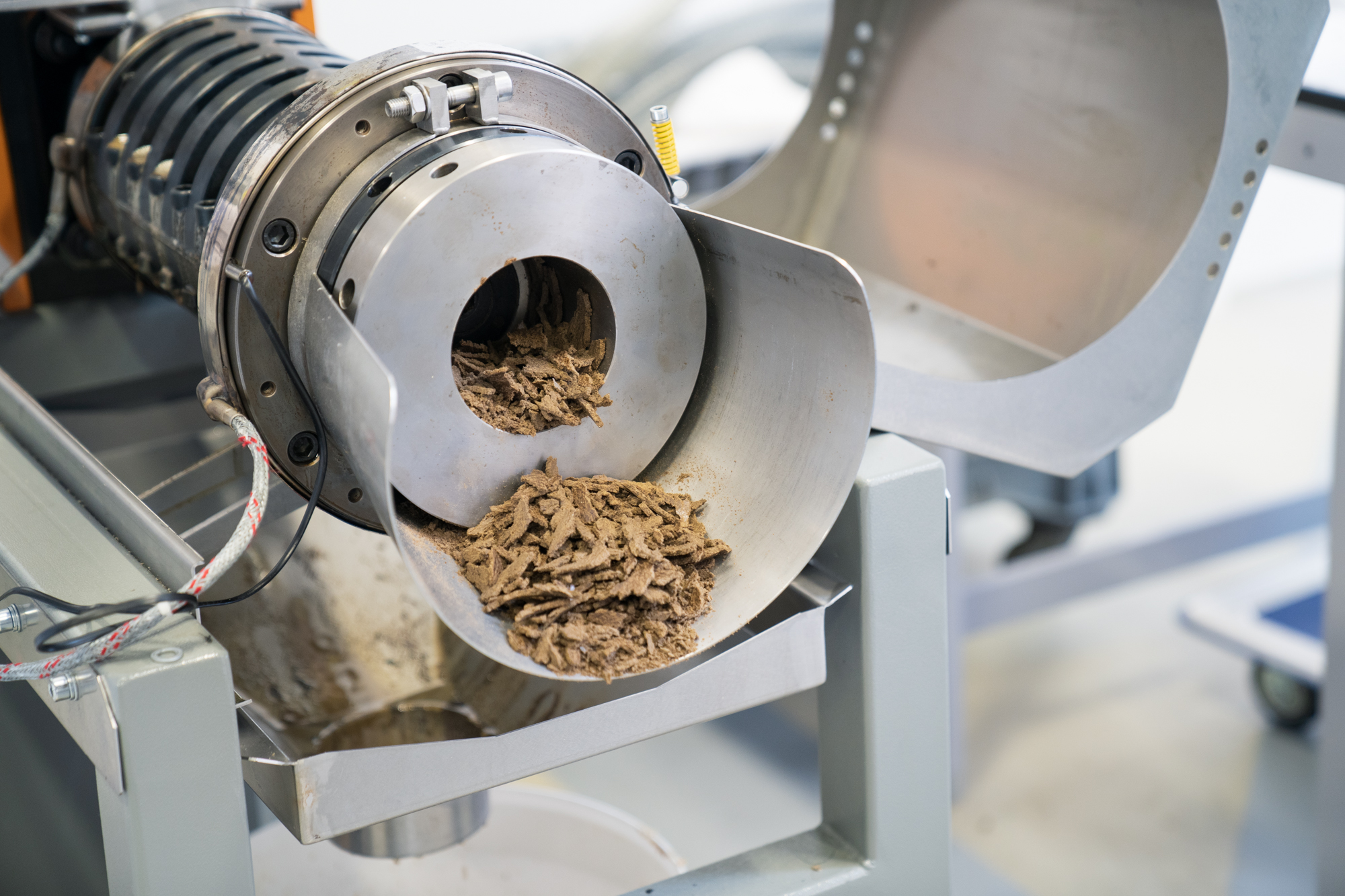Insect proteins are a sustainable and increasingly valuable food source for humans and animals. Some representatives of the insect kingdom are already being bred commercially under controlled conditions in order to obtain different product streams. Especially the commercially produced insect proteins have great potential as an alternative to soya protein and are already used as fish feed, for example.
Utilization of residues from insect breeding with insect biorefinery approach
Fraunhofer IGB is pursuing the concept of an insect biorefinery in which all material flows after insect breeding are used to create value. Thus, a sustainable insect biorefinery concept is realized by a holistic use of insect‑based products, such as protein, fats and chitin.
The aim is to produce new chemicals from insect fat in order to substitute fossil or tropical raw materials. We intend to use the biodegradable biopolymers protein and chitosan in technical applications and thus contribute further to the environment.
 Fraunhofer Institute for Interfacial Engineering and Biotechnology IGB
Fraunhofer Institute for Interfacial Engineering and Biotechnology IGB



